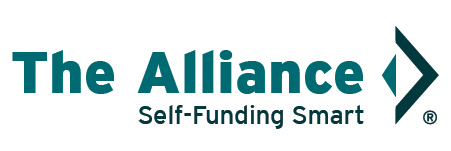Are Out-of-Pocket Costs a Barrier to Care?
By Jennifer Austin, Director of Marketing, The Alliance
 Consumer out-of-pocket spending on healthcare was projected to hit almost $500 billion in 2021 – and is expected to reach nearly $800 billion in 2026, according to healthcare market research group Kalorama Information. “Salary growth will continue to lag healthcare cost increases and as consumers are unable to afford rising expenditures, they will increasingly forgo treatment and/or search for less expensive options such as generic or OTC medications,” Kalorama wrote in a release.
Consumer out-of-pocket spending on healthcare was projected to hit almost $500 billion in 2021 – and is expected to reach nearly $800 billion in 2026, according to healthcare market research group Kalorama Information. “Salary growth will continue to lag healthcare cost increases and as consumers are unable to afford rising expenditures, they will increasingly forgo treatment and/or search for less expensive options such as generic or OTC medications,” Kalorama wrote in a release.
A new survey from Gallup and West Health finds about a third of Americans say they’ve skipped medical care they needed in the past three months due to concerns about cost. With such concerning studies coming out, now is the time for employers to be thinking about their benefits strategy and how to help their employees manage out-of-pocket spending.
Encourage Preventive Care
Under the Affordable Care Act, private health plans must provide coverage for a range of preventive services and may not impose cost-sharing (such as co-payments, deductibles, or co-insurance) on patients receiving these services. But simply covering them isn’t enough. Employers should think about how best to encourage the use of these services. Is an on-site or near-site clinic available to employees to make it more accessible? Do employees have to use vacation time they may not want to use to go to the doctor? If so, consider providing specific time off, or sick time, for doctor and dentist visits to encourage preventive care. This care has no out-of-pocket cost and can help head off more significant problems that may arise.
Fund HSA Accounts Upfront
Consider funding employee HSA accounts in advance so employees can use the account for out-of-pocket costs early in the coverage cycle. This can reduce employee concerns about out-of-pocket costs and increase the likelihood they will receive necessary care early in the year before they meet their deductible and out-of-pocket limits. Think about tying those funds to a Health Risk Assessment or something similar to encourage employees to check in yearly on their health.
Consider Steering and Tiering
While steering employees to certain doctors and hospitals may not seem like an employer’s place, this can help save the employee – and the health plan – a considerable amount of money. Encouraging employees to go where care is good and costs are low is key.
Employers can also help their employees avoid out-of-pocket costs by tiering their benefit design and recommending providers with no out-of-pocket costs. Choosing high-value providers that offer quality service for a good price can bring significant savings for self-funded employers. Passing these savings along to employees could be a goodwill gesture that is appreciated in these uncertain economic times
Customize Benefits
The burden of healthcare costs doesn’t just affect your employees’ wallets. Over half of Americans report the cost of healthcare contributes to stress in their daily life. The chance of experiencing stress rises steadily among those with lower household incomes. Some employers are changing their benefit plan design to ensure the cost-sharing for lower-income workers is manageable to ensure they can get the care they need.
Provide Out-of-Pocket Examples and Education
Many people are confused about deductibles, co-payments, maximum out-of-pocket costs, and other health insurance terms. Giving employees examples of out-of-pocket costs for common procedures helps employees more accurately envision the actual costs they need to plan for financially. These examples should include routine, preventive care that is typically fully covered, and examples that may vary based on whether the employee has met their maximum out-of-pocket costs. Offering ongoing educational sessions and planning tools in the workplace may also help employees plan for out-of-pocket costs over the course of the year, not just at open enrollment periods.
Consult with The Alliance
The Alliance provides customized networks, data, and insights to help you design more effective health plans. We also offer educational materials to help your employees get the most out of your health plan. Contact us so we can help you help your employees.
